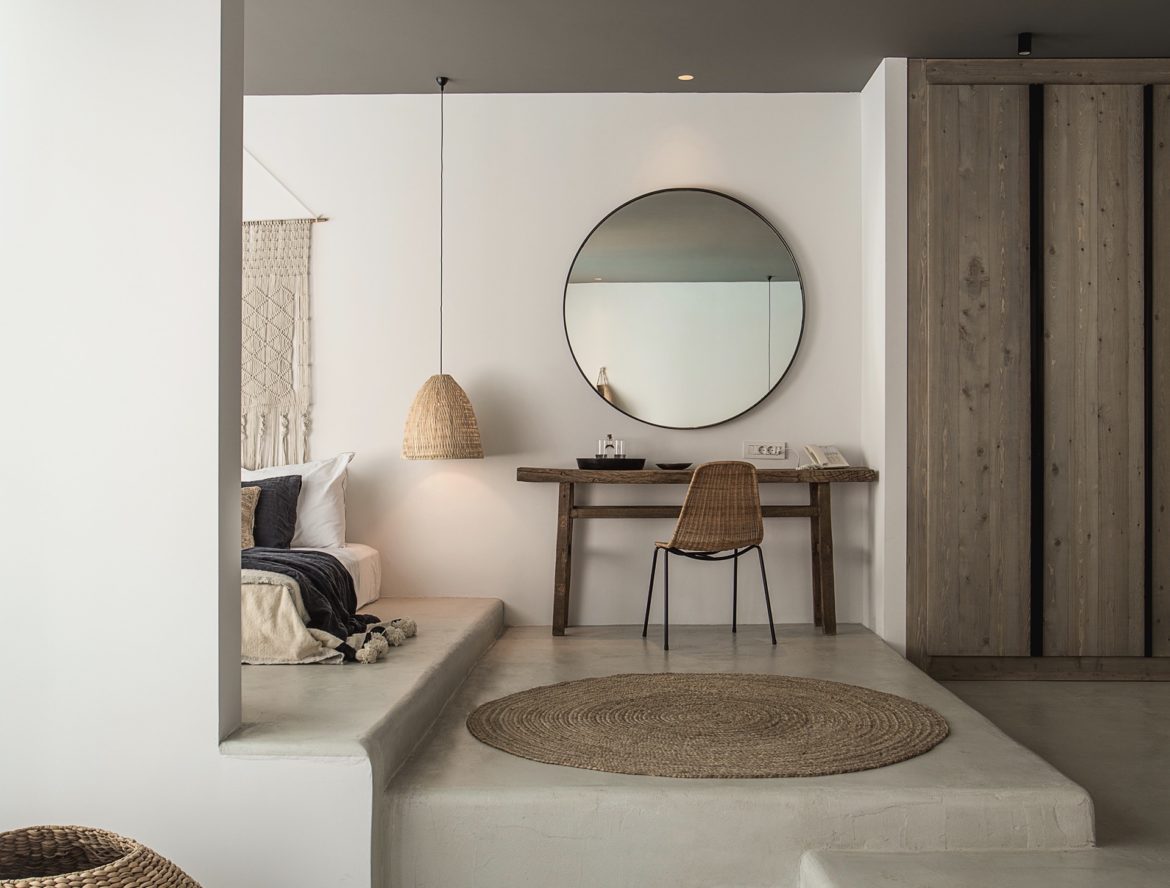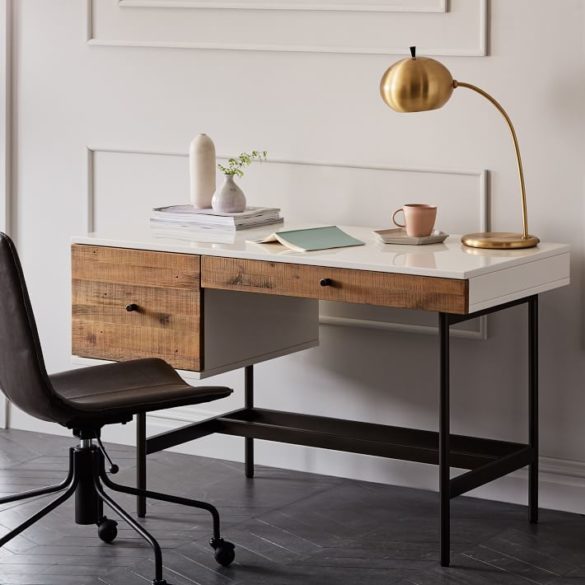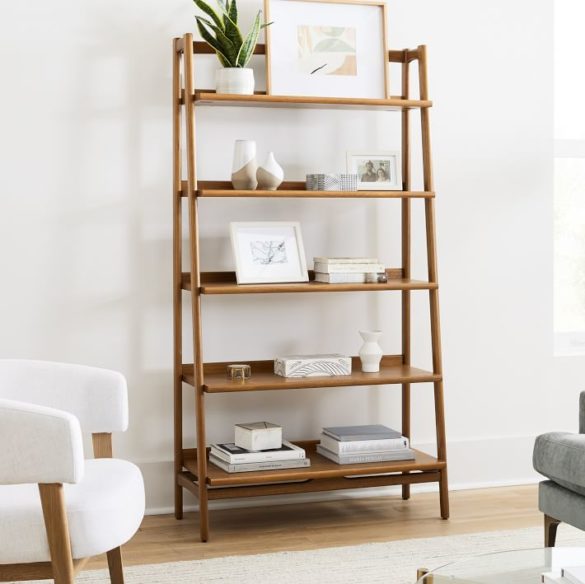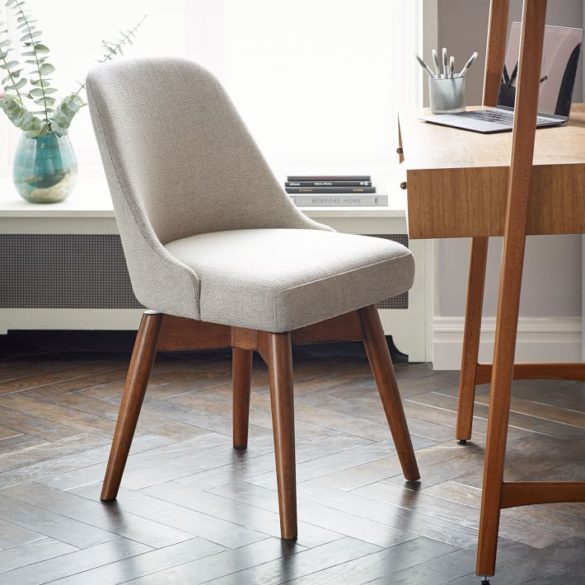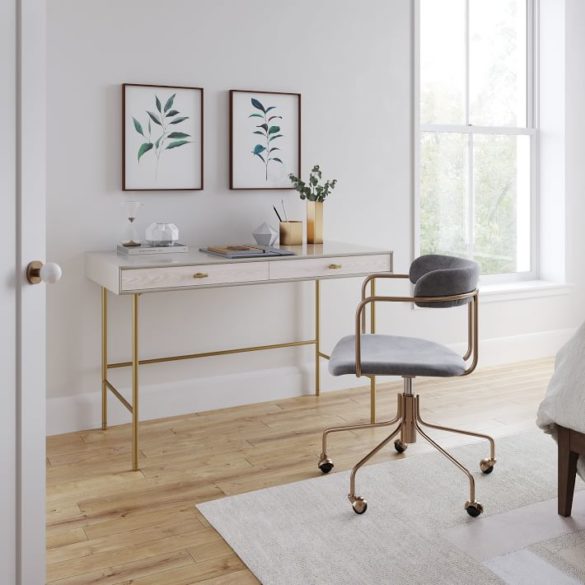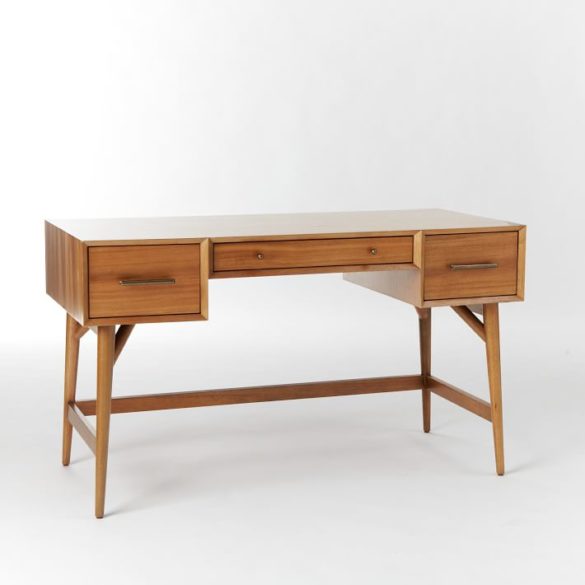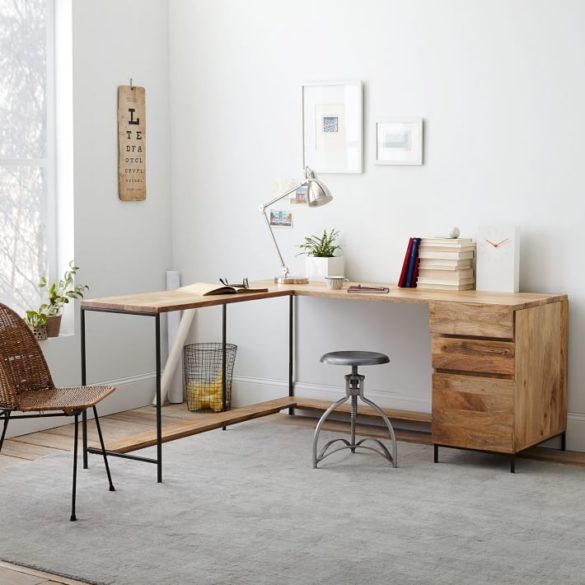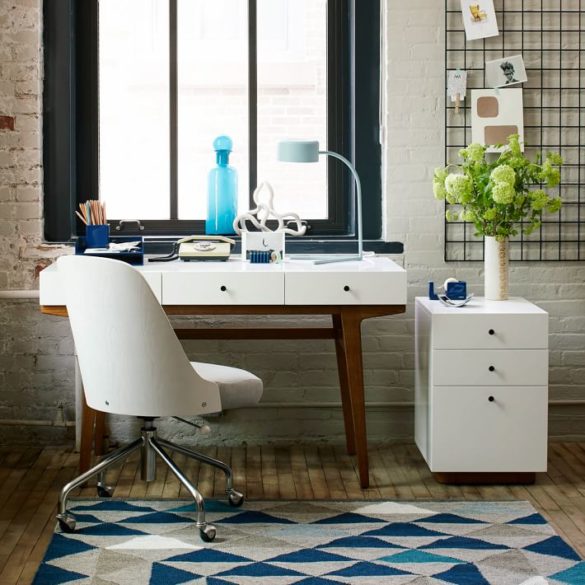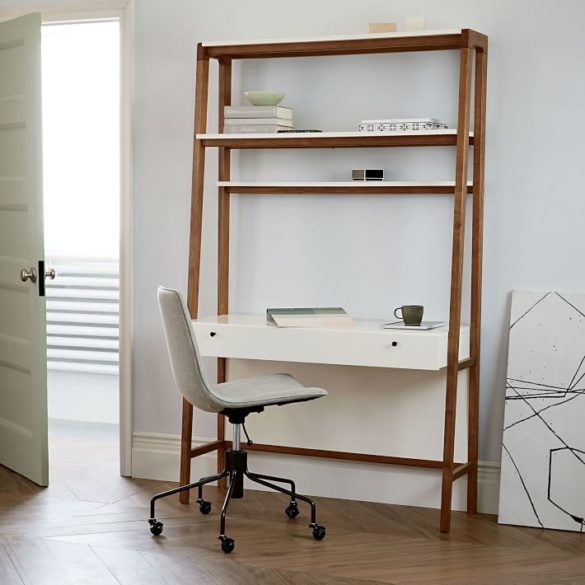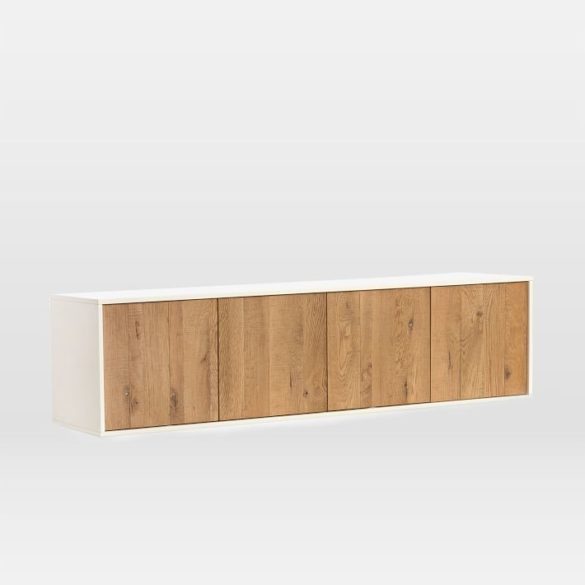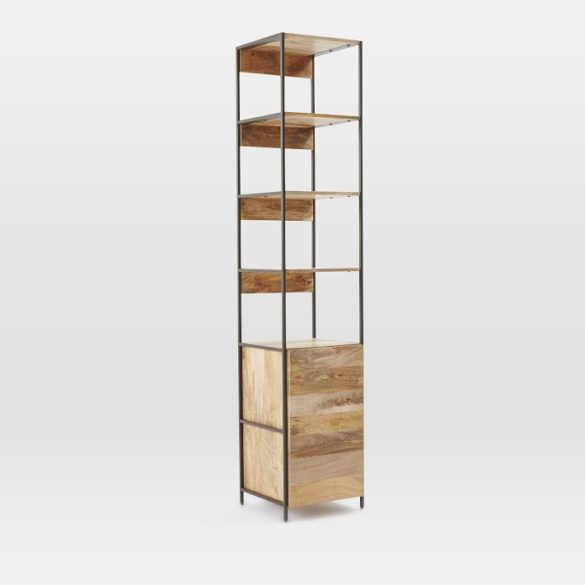Make your home office a more inviting space perfect for enhanced productivity with the simplicity of Scandi design
(Left) Reclaimed Wood + Lacquer Storage Desk – Reclaimed Wood/White, Image from West Elm and (Right) Mid-Century 38” Bookshelf, Image from West Elm
The Scandinavian sensibility of modern simplicity has long inspired interior decorators and designers around the world. The contemporary “Scandi” style we see today has risen from a combination of sources. These sources include Mid-Century Modern Danish, hallmarked by its pale but richly textured woods, simple but striking paneling, and overall natural aesthetic, as well as the starker interiors of Norway and the modularity of Swedish design.
According to Sienna Livermore in her article “Everything You Need to Know About Scandinavian Design” for House Beautiful, while Scandi design has always fit in well with many of the twentieth century design movements in America, recent months have shown that “Scandinavian design is having a moment.” At its core, Livermore explains, “Scandinavian design is minimal, with a focus on simplicity and functionality,” making it the perfect style around which to design a home office, which should be streamlined for productivity and efficiency. Follow below for three steps for embracing Scandi design in your home office.
Below one of our e-design projects of a Home Office Scandic-style. You can shop the items here
1. Choose Natural Materials
(Left) Mid Century Swivel Office Chair from West Elm and (Right) Modernist Wood and Lacquer Desk from West Elm
While imagining a Scandi-inspired home office, Ikea furniture might be the first thing to pop into your head. However, the cheaply made, faux-wood furniture made by manufacturing giants like Ikea is actually at odds with the “mission statement” of Scandinavian design. Sienna Livermore of House Beautiful explains that a design show that toured the US in the mid 1950s, during which Scandinavian design was rising in popularity in the States, “promoted works by Nordic designers emphasizing simple designs inspired by nature and the climate of the region.” Pale woods are especially prevalent amongst furniture by Scandinavian-inspired makers.
(Left) Mid Century Desk, Acorn Legs, Image from West Elm and (Right) Industrial Modular Desk Set, Image from West Elm
While many mass-produced furniture designs are streamlined and simple, they often include plastics and mixed-fiber materials, some of which make the pieces dangerous due to lack of heft and stability, as noted in The New York Times article “Ikea Reaches $50 Million Settlement Over Deadly Furniture Incident,” and due to the release of toxic chemicals like formaldehyde, as explained in Architectural Digest’s article “What You Need to Know About Off-Gassing.” Exposure to these chemicals can hurt worker productivity, so keep them out of your home office.
Try to purchase furniture and storage made from wood rather than from metal, as wood has been proven to reduce anxiety, which is one of the primary killers of productivity. Doctor of Psychology at the University of Tampere Marjut Wallenius, quoted in the article “Wood Construction Reduces Stress and Offers a Healthy Living Environment” for WoodForGood.com, notes that “Wood has psychological effects on people and a similar stress-reducing effect to nature.”
2. Decorate with Neutral Colors
(Left) Modern Desk from West Elm and (Right) Modern Wall Desk from West Elm
Scandinavian interiors focus mostly on neutral colors, with a few additions of blushes, blues, and greens. In her article “What Does Scandinavian Style Really Mean?” for Apartment Therapy, Bridget Mallon explains that “many Scandinavian colors rely heavily on neutrals, most notably, bright whites with pops of black and tan…[with] the overall spaces tend[ing] to be monochromatic, with hues coming into play as accent pieces.” Consider painting the walls of your home office warm white or light tan, accessorizing the space with pops of pale pinks in upholstery or green in potted houseplants.
MarthaStewart.com endorses warm white as one of the best paint colors for a home office that inspires productivity. In her article “The Best Paint Colors for Your Home Office” MarthaStewart.com writer Martha Biggs notes that “if you want limited visual distraction and a ‘clean’ space, [you should] try a warm white.” Avoid overly patterned wallpapers or glossy surfaces.
3. Store Away Supplies
(Left) Oak Wood + Lacquer Floating Media Console, Image from West Elm and (Right) Industrial Storage Modular System Set, Image from West Elm
Invest in quality storage for your home office to fall in line with Scandinavian design. Keep trinkets and other non-utilitarian objects in other rooms of your home, away from view as you work in your home office. Scandi design places emphasis on everything having its place and everything in a space having a purpose. Memories or useless decor objects that only take up space on surfaces that could be better used to house books or files should be removed. For storage, pick quality pieces that are not themselves distracting like the modular shelving units from West Elm pictured above.
Maximizing your office’s adherence to Scandinavian design is not the only reason to clean up any messiness, however. The article “How Clutter Impacts Your Work Productivity,” published on EntrepreneurshipLife.com, explains that “Clutter prevents productivity and growth, which often makes one feel stagnant in the workplace. When you start to notice that your mess is decreasing your motivation, it’s time to declutter your office once and for all to maximize your creativity and efficiency.”
By embracing the three steps listed above, you will be able to quiet your mind, center yourself, and increase your productivity all while creating a beautiful and timeless Scandi-style home office.
